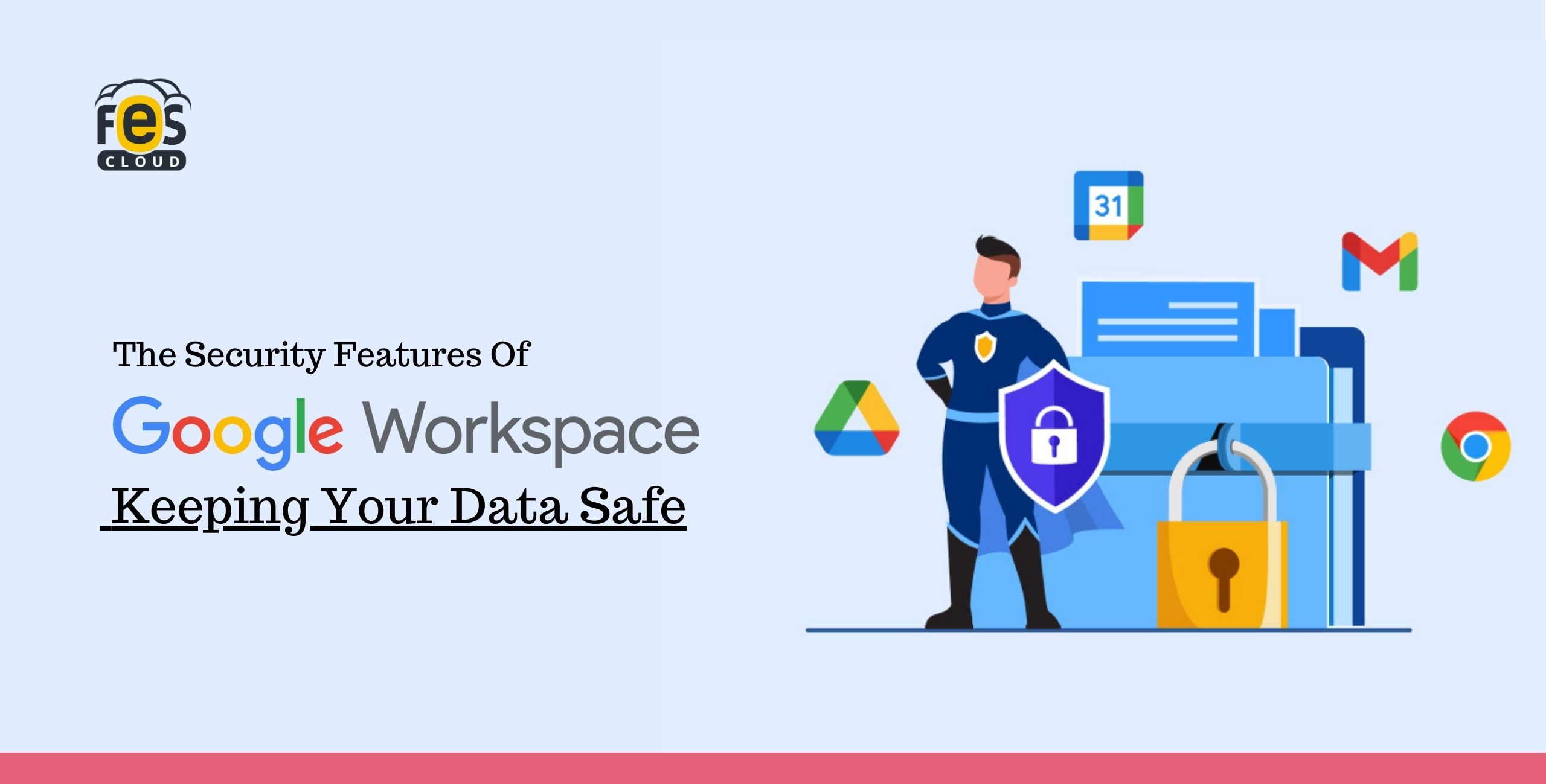The Security Features of Google Workspace: Keeping Your Data Safe
In today’s digital age, where data breaches and cyber threats have become all too common, ensuring the security of your sensitive information is paramount. For individuals and businesses alike, safeguarding data means taking proactive measures to prevent unauthorized access, data leaks, and other potential risks. Google Workspace, formerly known as G Suite, stands out as a comprehensive solution that not only enhances collaboration and productivity but also prioritizes security. In this blog post, we’ll delve into the robust security features of Google Workspace that work cohesively to keep your data safe from various threats.
Choosing the right Google Workspace plan to secure data for your business depends on the size of your organization, your specific security needs, and your budget. There are different Google Workspace plan that cater to various requirements, with varying levels of security features.
10 Security Features of Google Workspace
1. Two-factor authentication (2FA):
Google Workspace employs advanced encryption techniques to protect your data both in transit and at rest. During transmission, data is encrypted using SSL/TLS protocols, ensuring that any information exchanged between your device and Google’s servers remains secure. Additionally, data stored on Google’s servers is encrypted using robust algorithms, making it extremely difficult for unauthorized parties to decipher even if they gain access to the physical servers.
2. Data encryption:
Google Workspace employs advanced encryption techniques to protect your data both in transit and at rest. During transmission, data is encrypted using SSL/TLS protocols, ensuring that any information exchanged between your device and Google’s servers remains secure. Additionally, data stored on Google’s servers is encrypted using robust algorithms, making it extremely difficult for unauthorized parties to decipher even if they gain access to the physical servers.
3. Advanced phishing and malware protection
Phishing attacks are a common tactic used by cybercriminals to trick users into revealing sensitive information. Google Workspace’s advanced phishing and malware protection tools utilize machine learning algorithms to identify and prevent such threats. These tools scan incoming emails and attachments for suspicious content, warning users or moving potentially harmful messages to spam folders. This proactive approach helps prevent users from falling victim to phishing attacks that could compromise their data.
4. Secure collaboration controls:
Collaboration is a key component of Google Workspace, and security isn’t compromised in the process. Administrators can set up granular access controls, determining who can view, edit, or share specific files and folders. Additionally, Google Workspace offers features like “link sharing” settings, which allow administrators to restrict sharing to specific users or groups, preventing unintentional data leaks.
5. Mobile device management (MDM):
In today’s mobile-centric world, ensuring the security of devices that access your organization’s data is crucial. Google Workspace offers mobile device management tools that enable administrators to enforce security policies on mobile devices used by employees. This includes requiring strong device passwords, enforcing encryption, and remotely wiping devices in case of loss or theft.
6. Data loss prevention (DLP):
Data loss prevention is a proactive strategy that aims to prevent the accidental sharing of sensitive information. Google Workspace’s DLP features scan content within emails, files, and other documents for predefined patterns or sensitive information like credit card numbers or Social Security numbers. If such data is detected, the system can either alert administrators or prevent the data from being shared, minimizing the risk of data leaks.
7. Suspicious login alerts:
Google Workspace’s security features include alerts for suspicious login attempts. If someone tries to access your account from an unusual location or device, you’ll receive an alert notifying you of the potential breach. This gives you the opportunity to take immediate action, such as changing your password or reporting the suspicious activity to your organization’s IT department.
8. Continuous monitoring and updates:
Google invests heavily in maintaining the security of its services. This includes regularly updating and patching vulnerabilities that could be exploited by cybercriminals. By utilizing Google Workspace, you benefit from the ongoing efforts to stay ahead of emerging security threats, ensuring that your data remains protected.
9. Third-party app security:
While third-party apps can enhance productivity, they can also introduce security risks. Google Workspace provides a marketplace of trusted apps that have undergone security reviews. Administrators can control which third-party apps can be used within their organization, reducing the risk of malicious apps compromising data.
10. Compliance and certifications:
Google Workspace adheres to stringent compliance standards, making it suitable for organizations in various industries with specific regulatory requirements. It holds certifications such as SOC 2, ISO 27001, and HIPAA, demonstrating its commitment to maintaining the highest security and privacy standards.
In conclusion, the security features of Google Workspace play a pivotal role in keeping your data safe in an increasingly digital and interconnected world. From two-factor authentication and robust encryption to proactive threat detection and compliance certifications, Google Workspace offers a comprehensive suite of tools to safeguard your sensitive information. By incorporating these security features into your organization’s workflow, you can focus on productivity and collaboration without compromising on data security.



